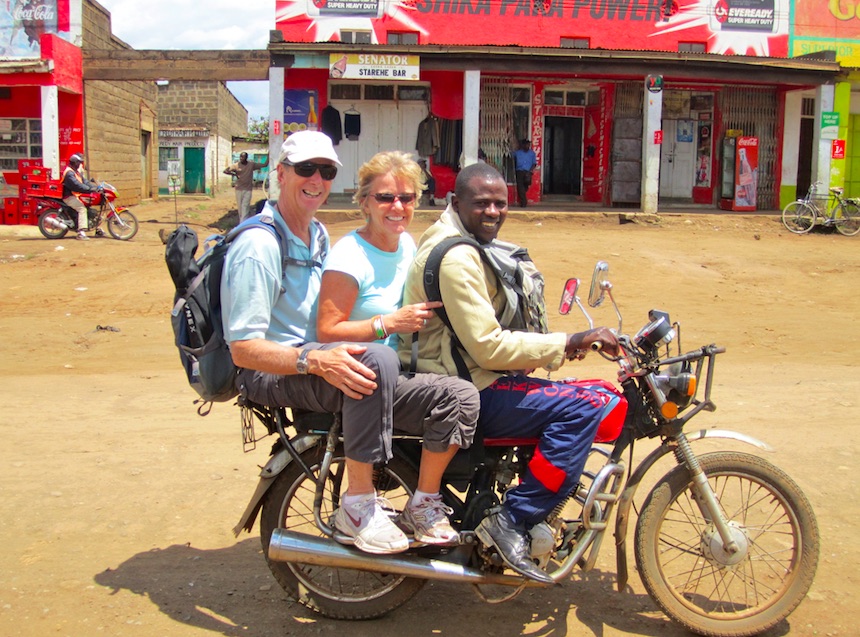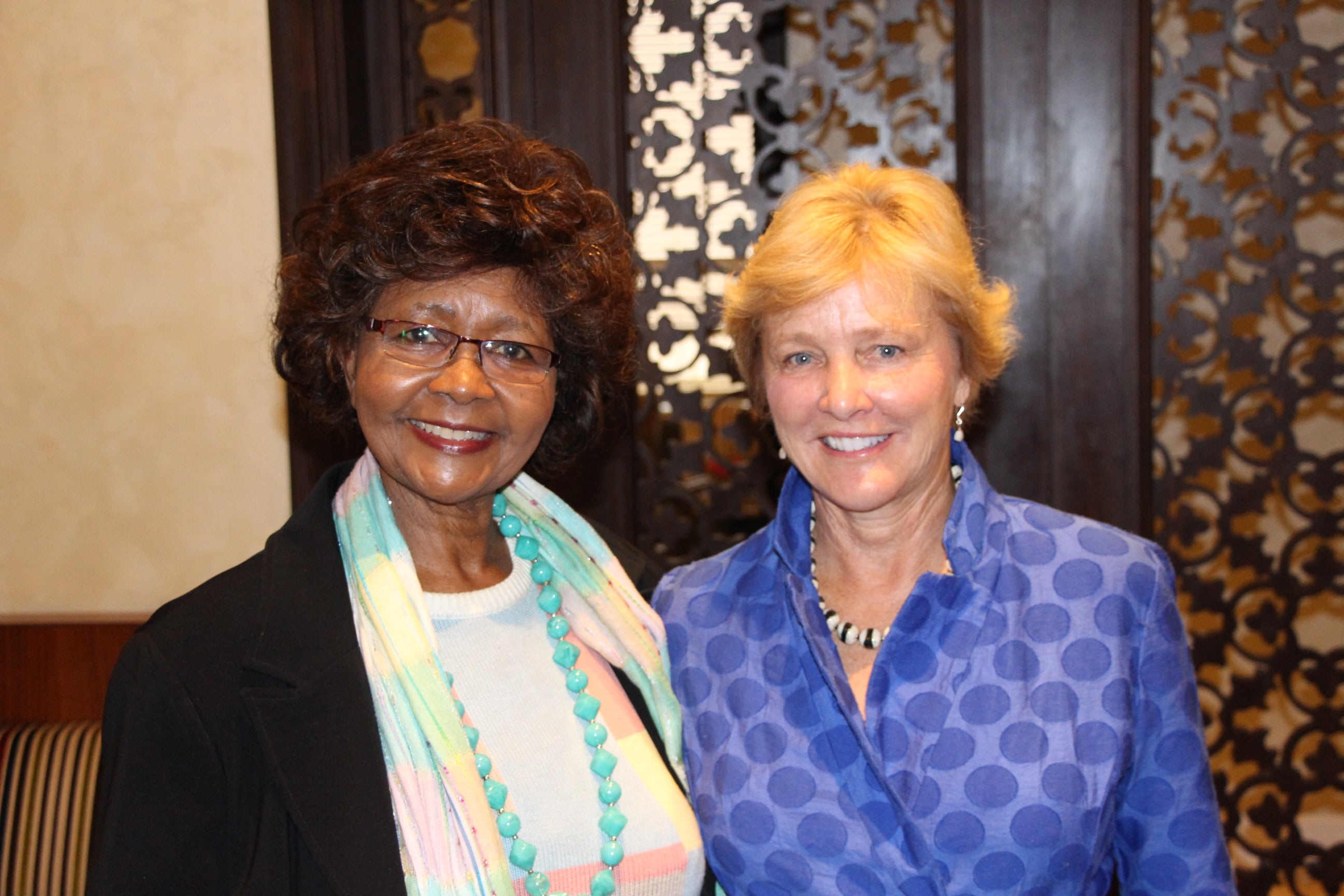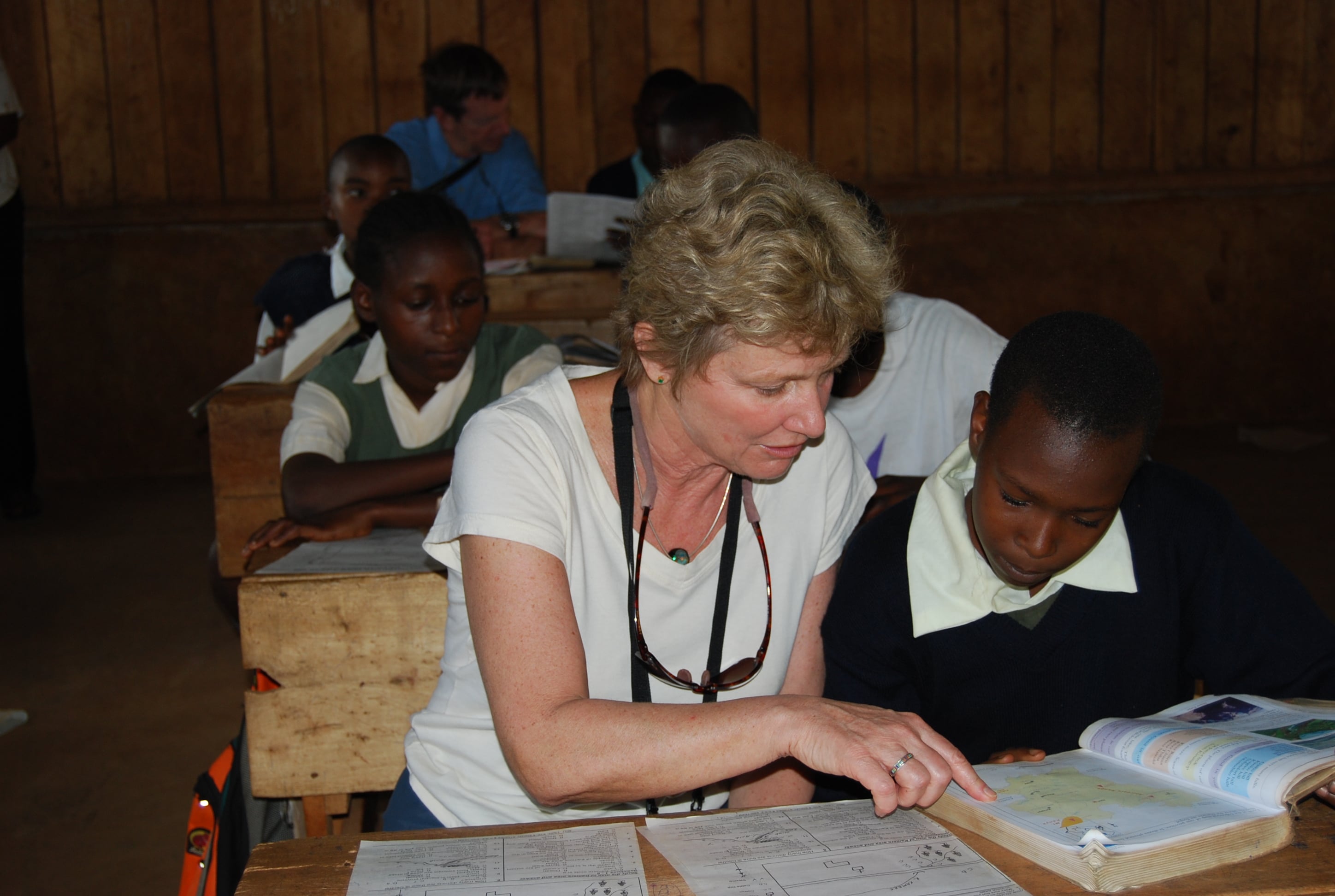
Nancy and Rod Van Sciver, founders of Education For All Children, go off-road to visit an EFAC student.
After witnessing global poverty in their travels, real estate developer, Nancy Van Sciver and her husband, Rod, a business owner, asked themselves how they could make a difference. In 2008, they founded Education For All Children (EFAC), an education-to-employment scholarship program that has supported over 400 under-served secondary and post-secondary students in Kenya. In 2017, EFAC will see its first class of university students graduate and many of those students’ sponsors will travel from the U.S. for this momentous occasion.
impactmania’s contributor Kristina Van Dyke spoke with Nancy Van Sciver about the personal connection that is at the heart of EFAC’s model and success.
BY KRISTINA VAN DYKE
How did you and your husband, Rod, decide to focus your philanthropy in Kenya?
We traveled in South America and Asia and were moved by how poor people were there. We decided we wanted to do something about global poverty. We both started reading books about it, one of the books that I read was Giving by Bill Clinton. He told a story about a school teacher from Brooklyn named Mark Grashow who had visited Zimbabwe and realized that school children were lacking books. Returning from his trip, he got his fellow teachers to collect the books thrown out every few years in the New York schools and send them to Zimbabwe.
I called Mark Grashow and said, “You are doing an interesting thing in Zimbabwe and I’d like to talk to you about it.” He asked if I ever get to Brooklyn and I told him I’d be there the next day. In 24 hours he had assembled an interesting group of African philanthropists who convinced me we should make the trip to Africa. From there, we read a lot about East Africa and talked to more people and became increasingly convinced this was a place we could focus our efforts.
Tell me about the conversations you and Rod had about global poverty and your ideas to confront it.
Our conversations evolved over a short period, perhaps a year or two. Rod was thinking about small to medium sized businesses that would enable people to make a living. I was torn between that idea and doing something in education.
We decided to take an exploratory trip to Kenya, our first trip to the African continent. Before we left, we developed a short questionnaire, our “mini-McKinsey,” it was a tool that would help us research and identify what people living in Kenya wanted and needed most. We talked with people in orphanages, schools, in their homes, at the market, and we found total consensus. The people we talked to said the only way out of poverty is to “educate our kids.”
How did you figure out who to talk to in Kenya?
Mark Grashow made a number of introductions before we left, including a pastor in Nairobi who took us to places in very poor areas. We had some formal appointments, but also just spoke to anyone we encountered and they all said the same thing, “Educate our kids and our lives will change.”
Our real turning point came at the end of our trip. We had a meeting set up with a friend of a friend, and he asked if he could bring his mother with him, Dr. Leah Marangu, the Vice Chancellor of African Nazarene University (ANU). We spent the whole day with her talking about how to support the education of Kenyan kids. She had tried to get something going with a couple of other organizations, but it had never worked out. She said, “I don’t know how my board will go for this, but I have a good feeling about you.” Three weeks after we got home we had signed a memorandum of understanding with African Nazarene University. They became our partner in Kenya and we agreed to sponsor 20 kids the next year.
So, that’s when Education For All Children was launched? The organization was just you and Rod at that point? What exactly had you agreed to?
That’s right. We agreed to sponsor scholarships for 20 high school students, which at that time was a $15,000 annual commitment.
How did you identify high school students as your target group?
In 2003, primary school was made free in Kenya. The response was huge, resulting in overcrowded and under-resourced classrooms. It was very inadequate, but it was school. While primary school is free, high school is not. Students also have to pass a national exam to enter and, as you can imagine, a lot of students are not prepared to pass the test.
Sixty percent of students graduating from 8th grade will never go on to high school. Even assuming their child passes the exam, people who are making $2 or less a day can’t afford even an inexpensive high school, which costs hundreds of dollars a year. EFAC sends students to the national high schools as well as some private schools, which are more competitive than regional ones and more expensive. The tuition at national high schools is around $1000.

Nancy Sciver with Dr. Leah Marangu at African Nazarene University (ANU).
Your unexpected encounter with Leah Marangu helped transform your ideas and insights from the “mini-McKinsey” into reality. Can you tell us more about your collaboration with African Nazarene University and how it has mobilized EFAC’s success in Kenya?
A lot of our success boils down to how lucky we were to meet Leah. She enlisted her team at African Nazarene University and they agreed to become our partner on the ground, which has been absolutely critical. Because our team is part of the university, including the Chief Financial Officer (CFO) who handles all funds, we have never had to worry about financial mismanagement. The Kenyan team facilitates all the administrative aspects of the program for us. We see every single receipt.
In addition to that, they identify students who need EFAC scholarships and will succeed in our program. Beth Wokabi is the chair of the ANU Education Department. She works with teachers all over the country and gets our applications out to the most underserved areas. We’re looking for students who rank very highly in their class but are extremely disadvantaged. These kids come from slums and rural poverty and yet they are ranked at the top of their classes. You have to be resilient to overcome the obstacles they encounter.
What do you mean when you say “extremely disadvantaged?”
Everything really. For example, one night I was taking a boy back to his children’s home. It was very basic, a slatted barn with holes all through it. He told me his story. His father died and his mother remarried. Stepparents often reject the children of the other father. In this case, the boy recounted that his stepfather would actually hold him, at five years old, underwater in a cold bucket. By seven, he was on the streets, fending for himself. And then, as he said, “some ‘well-wisher’ found me and brought me to this children’s home.” He became an EFAC student in 2010. Today he is at Africa Nazarene University studying Information Technology. He’s the number one IT student at all three ANU campuses.
That’s incredible. It must be so exciting to play a supporting role in this kind of transformation. Can you take us back to your commitment to the first 20 students and what that first year looked like for EFAC?
We came back from Kenya in April of 2008 and said, “Let’s do this.” We produced a website, a brochure, and a golf tournament in three months. Between those efforts and talking with our friends, we had raised enough money to support 42 students in the first class. The university was a little bit overwhelmed, but they handled it and they’re still managing it with over 400 students. In the very first year, our colleagues in Kenya recommended organizing a workshop for the students to help them begin to develop a vision for the future.
How do workshops help EFAC achieve its vision?
While our students are smart and resilient, they don’t have a vision for the future. They come from families where no one ever held a formal job. Had they not received these scholarships, they would have been doing things like housekeeping or goat herding. Workshops help high school students visualize where they will be in eight years. Students come with aspirations to be doctors, lawyers or pilots, because that’s all they really know about success. We help them to visualize new ideas and what it takes to get there. Students coming out of difficult circumstances have aspirations; they just have no idea how to realize them.
Can you talk about how you have managed scale as an organization?
All the big funders want you to have thousands of students and be in ten different countries. We’ve talked a lot about scale and decided that we have to keep it relevant to our program and not to external models. Our program is dynamic. We have developed from a high school scholarship and mentoring program into an education to employment program by including university scholarships and expanding our workshops to include both online and classroom employability skills. There are over 400 students in the program with a projected 600 in the next two years. But most important is that EFAC students will become part of Kenya’s emerging middle and professional class. They will be Kenya’s future leaders and change-makers. That is our goal.
In a country of such need we also recognize and emphasize the importance of giving back. EFAC students are the fortunate ones and giving back to their community is expected and honored. We require a three-month community service project between high school and college and an ongoing community service commitment as a requirement of their university scholarship.
We may never be the organization that sponsors 10,000 students directly, but we can affect 10,000 students by sharing our high school and university workshop models. For example, two organizations have asked us to facilitate our workshop program for their students, enabling us to impact hundreds more students over the next two years.
And now you’re expanding beyond university into internships.
This year we launched the wezesha workshop, which is Swahili for empowerment and it focuses on employability. At the workshop we ask our rising graduates to design businesses and then we invite representatives from corporations to come in and judge their ideas as well as do mock interviews with our students. Eleven of the 38 attendees received internship offers from the participating corporations. This was not part of our plan but a stunning result. Unemployment in Kenya is at 40 percent and half of that is among the youth. Our goal is that 85 percent of our students will be employed within 6 months of graduation.
How much does it cost to support a student? What kind of a relationship do students have with donors?
It’s $1,000 a year for four years. We offer our sponsors the opportunity to continue with their student through university, which is also $1000 a year. Seventy percent continue to support their student.
We have a one-on-one sponsorship model, which is fairly unique because you are actually underwriting and connected to a specific student. Donors and students write back and forth and students’ grades are shared with donors. Once students go to university, they can email with their donors. That communication creates a close bond. Our first class of 42 university students will graduate this year and 24 sponsors will attend, a testament to the strength of that bond!

Nancy visiting a partner school.
What attracts sponsors to EFAC?
I think it’s this personal connection — knowing that you are directly impacting someone’s life and that 100 percent of your donation directly supports your student. It’s surprising how many people from all different walks of life support our program. I was at a restaurant recently and a waitress identified herself as an EFAC supporter. That’s a huge commitment and we are profoundly grateful.
What’s interesting is that the personal contact also leads to change in perspective about Africa among our donors. They see how much kids everywhere are the same, while also learning about Kenyan culture.
How can readers support your work?
They can go to our website, www.educationforallchildren.org and sponsor a student for $1000 a year or join a group of four or five and share the sponsorship. All sponsors will receive letters and grades from students and have the opportunity to write their students. Through their support hey will directly impact a student’s life.

